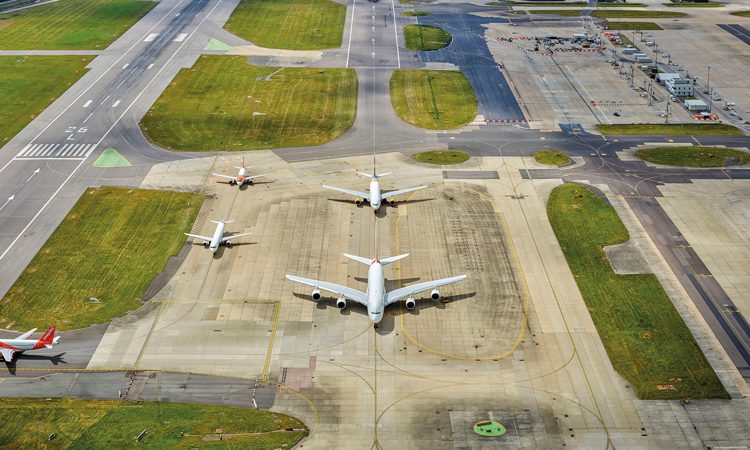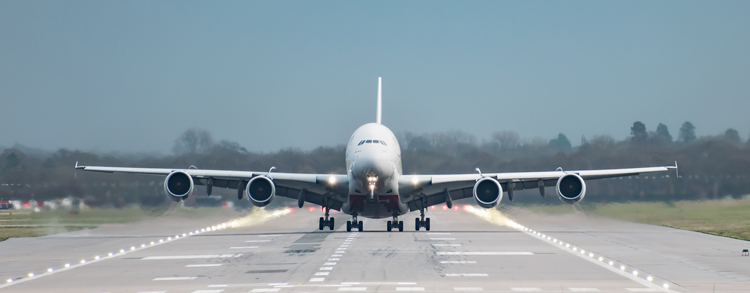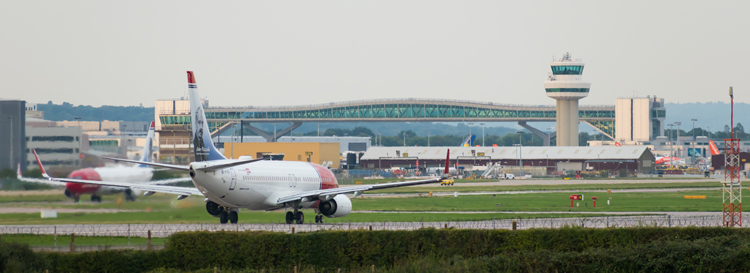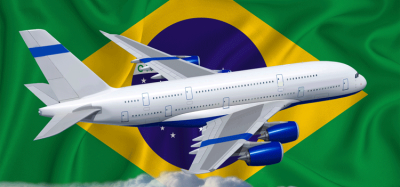Utilising existing assets for efficient air traffic control
- Like
- Digg
- Del
- Tumblr
- VKontakte
- Buffer
- Love This
- Odnoklassniki
- Meneame
- Blogger
- Amazon
- Yahoo Mail
- Gmail
- AOL
- Newsvine
- HackerNews
- Evernote
- MySpace
- Mail.ru
- Viadeo
- Line
- Comments
- Yummly
- SMS
- Viber
- Telegram
- Subscribe
- Skype
- Facebook Messenger
- Kakao
- LiveJournal
- Yammer
- Edgar
- Fintel
- Mix
- Instapaper
- Copy Link
Posted: 1 May 2019 | Rowland Hayler - Gatwick Airport | No comments yet
With the world’s most efficient single runway, Gatwick Airport has already achieved the seemingly impossible of 55 movements an hour. Rowland Hayler, Runway and Airspace Development Lead at Gatwick Airport, reveals how the airport is planning to get even more out of this asset.


Gatwick is already the most efficient single runway airport in the world. Today, 55 movements an hour has become the new norm during peak periods, but when first achieved in 2014 it really pushed the boundaries of what was possible. Things have since moved on and new technology is available that, if implemented and managed correctly, could help increase Gatwick’s peak hour movements to 60 an hour.
This level of operational intensity would be another world first. Gatwick is under no illusion that it will be challenging to achieve, but the airport consistently seeks innovative ways to meet increasing airline demand and has already held a public consultation on its draft plans.
Drive for 55 programme
When Gatwick changed ownership in 2010, the airport had a declared peak capacity of 50 movements per hour. This was already the highest of any single commercial runway in the world. However, just four years later, 55 movements was the regular rate during peak periods following the airport’s bold and exciting ‘Drive for 55’ programme.
Many critics and commentators said it was impossible to achieve that level of performance on a single runway. Well, we did it, and we’ve stabilised and maintained that level of performance since 2014 and now operate at a declared peak capacity of 55 movements an hour for five hours each day.
The Drive for 55 programme involved implementing many different process, procedures and system improvements, both on the ground and in the air. Stabilising arrivals spacing on final approach was one improvement that unlocked a major increase in runway throughput. This provided much greater accuracy and predictability for launching a departure between two arrivals, while minimising the risk of an arrival go-around.
Looking at how often the airport hits this peak declared capacity number in isolation, however, does not tell the full story. Even if 55 movements an hour is not achieved, the runway can still be extremely busy.
So, in 2012, Gatwick also started tracking the total number of hours in any peak summer month when the runway was operating at more than 52 movements per hour. In 2012, this was achieved for a total of 59 hours in one month, but by 2017 that number had increased to 548 hours – a nine-fold increase.
This really does represent an incredible achievement and it continues to place Gatwick at the very top of the industry for high intensity runway operations. No other airport in the world is operating arrivals and departures on a single runway at this level of performance.
However, Gatwick has never been one to rest on its laurels, and, while always keeping safety as its number one priority, is continually looking to push the boundaries of the possible. The airport was further spurred on when, in June 2018, the UK Government set out its policy support for airports beyond Heathrow to develop a new runway in the South East of England.


Gatwick’s main runway currently processes 55 movements per hour
Unchartered territory
It may come as a surprise, but today Gatwick occasionally achieves 60 movements an hour on its single runway. This is another ambitious target to aim for but the challenge for the airport is to find ways to deliver this rate consistently whenever needed, day in-day out.
Over the last few years, Gatwick has been working on a major research effort to figure out how much more runway throughput can realistically be achieved. A rate of 60 movements an hour has never been achieved at a commercial airport consistently, so ensuring it can be achieved regularly is a significant and complex project.
We are aware of the scale of this ambition and know it will be industry leading, not least because there is no place we can go to find out how to do it. In fact, people come from all over the world to see how we deliver 55 movements an hour. We must create a new operational reality for ourselves and for the industry.
The team started with a long list of potential options and capabilities, many of which had been progressed through SESAR and NextGen, which are European and U.S. airspace modernisation initiatives. The team synthesised these down to just two key things that Gatwick needs to do to achieve its ambitious objective.
The first improvement involves embracing and integrating the latest technologies into a single operating system to achieve greater operational precision in the spacing and sequencing between aircraft. This builds upon some of the capabilities implemented during the ‘Drive for 55’ programme, including departures and arrivals spacing tools.
The second proposal is radically different and requires new tools and techniques to reduce the workload of the air traffic controllers to enable them to handle more aircraft. This means working very closely with Air Navigation Solutions (ANS) – Gatwick’s air navigation service provider – to simplify workflows and the systems used. While this is certainly a very technical project, more than anything it is the human element that will be the key focus of change here as it represents nothing short of a transformation of the ATC function.
Every second counts
Operating at the equivalent of one aircraft per minute means that every second really does count. To achieve the required level of precision, Gatwick needs to integrate new technologies into a single operating system that enables it to manage its traffic using Time Based Separation – as opposed to the current system which measures the separation between aircraft by distance.
This means that today, when Gatwick’s local control tower requests the arrival spacing from the National Air Traffic Control Service, based at Swanwick, it typically requests six- or 5.5-mile spacing. This distance gives the airport enough time between two arrivals to safely send a departure on its way.
This rather crude system has its limitations, however, and is not as efficient as it could be. For example, it does not allow Gatwick to request a 5.75-mile separation – it is either a six- or 5.5-mile spacing. Translated into time, that means adding an extra six seconds of buffer to the spacing between the two arrivals. Adding all the six-second buffers up over the course of a day is the equivalent of at least three more movements in an hour.
The sequencing of departures is a slightly different problem. Here, Gatwick is constrained by the fact that a lot of the traffic, especially during the early morning first wave, wants to go in the same directions down the same routes. However, if Gatwick wants to use the same route for consecutive departures, it must provide a gap of two minutes, whereas if it uses alternating routes – left, then right, then left etc. – it only needs to have a one-minute gap between two consecutive departures.
Clearly using alternate routes is advantageous in runway throughput terms, but it requires clever traffic sequencing and close collaboration with the airline partners.
The good news is that Time Based Separation has already been implemented elsewhere. Gatwick plans to leverage and adapt this work so that it fits with the airport’s mixed mode operations, including integrating information on departures and runway occupancy time.
When this work is completed it will enable Gatwick to handle four extra movements per hour with a balanced 50/50 arrival/departure mix of traffic, which happens most of each operational day.
Runway occupancy time – the amount of time that an arrival or departure is on the runway – is also a big deal for Gatwick. If each movement spent just one second less on the runway, the airport could safely add one extra movement every hour.
To achieve this, Gatwick is considering a new Rapid Exit Taxiway in a better position than the existing ones. This will help to reduce runway occupancy time and would have added the benefit of allowing greater operational resilience including for example reducing ‘go-arounds’.
These changes cannot happen, however, without a transformation of the ATC function so that controllers can safely handle more aircraft.


More than 45 million passengers pass through Gatwick Airport each year
Air traffic controllers – the human dimension
If you were to go to Gatwick’s Control Tower today, you would find that each controller has at least seven different screens in front of them to enable them to do their job. It was never designed this way. It just happened as more and more information became available. This poses the risk of controllers approaching sensory overload when interpreting the variety of information sources.
Gatwick’s second key improvement therefore is a plan to work with controllers to implement new simplified processes, tools and techniques to create the capacity to safely manage the future traffic volumes the airport aspires to.
It’s nothing short of a major transformation of air traffic control. We have secured excellent engagement from ANS and have now started this work. We’ve engaged Honeywell to help us develop this new integrated capability and by the end of this year we will have our Innovation and Test Lab set up.
This will initially be a standalone simulation environment with a base system that controllers can then come and work with. We will use iterative design and prototyping techniques to develop the detailed requirements and we are aiming to have the production system available for parallel running by the end of 2021.
This workflow re-engineering will simplify and integrate a wide range of technology, and Gatwick – in partnership with the airport’s air traffic control provider ANS – has been speaking to technical firms and airports around the world about possible solutions.
While vital, the new IT will only be an enabler in this process. The fundamental shift will be the behavioural change that controllers will have to shape and embrace compared to the way they currently operate.
Paul Diestelkamp, Head of Programmes and Development at ANS, commented: “We are under no illusion that this is a major transformation of ATC roles and ways of working. There’s a serious element of behavioural psychology to this. It’s not all about hard technology and systems.”
Using the standby runway at the same time?
Achieving 60 movements an hour will be a significant challenge, but the task is assisted by the fact that no airspace change is required because it would all take place on the airport’s existing main runway.
Increasing capacity on the main runway, however, is only one scenario Gatwick is looking at. The airport’s draft master plan also explores how its existing standby runway might be brought into regular use alongside the main runway. This would be in line with UK government’s policy, which supports all airports to maximise the use of their existing infrastructure and could see Gatwick’s capacity rise to between 68 and 70 million passengers a year by 2032.
Bringing the standby runway into regular use alongside the world’s busiest commercial runway would once again create a new challenge. However, in the absence of new runways, airports with capacity constraints may soon struggle to meet forecast demand without introducing new thinking and innovation.
Biography
Rowland Hayler leads Runway and Airspace Development at Gatwick Airport and in this capacity is currently leading the airport’s programme to achieve 60 movements per hour on its single main runway. In addition to Rowland’s seven years’ experience in the aviation industry, he has also worked with some of the world’s leading service organisations in the practical application of advanced business process engineering techniques to achieve transformational performance improvements.
Issue
Related topics
Air traffic control/management (ATC/ATM), Airside operations, Capacity, Passenger volumes, Runways and pavements


















